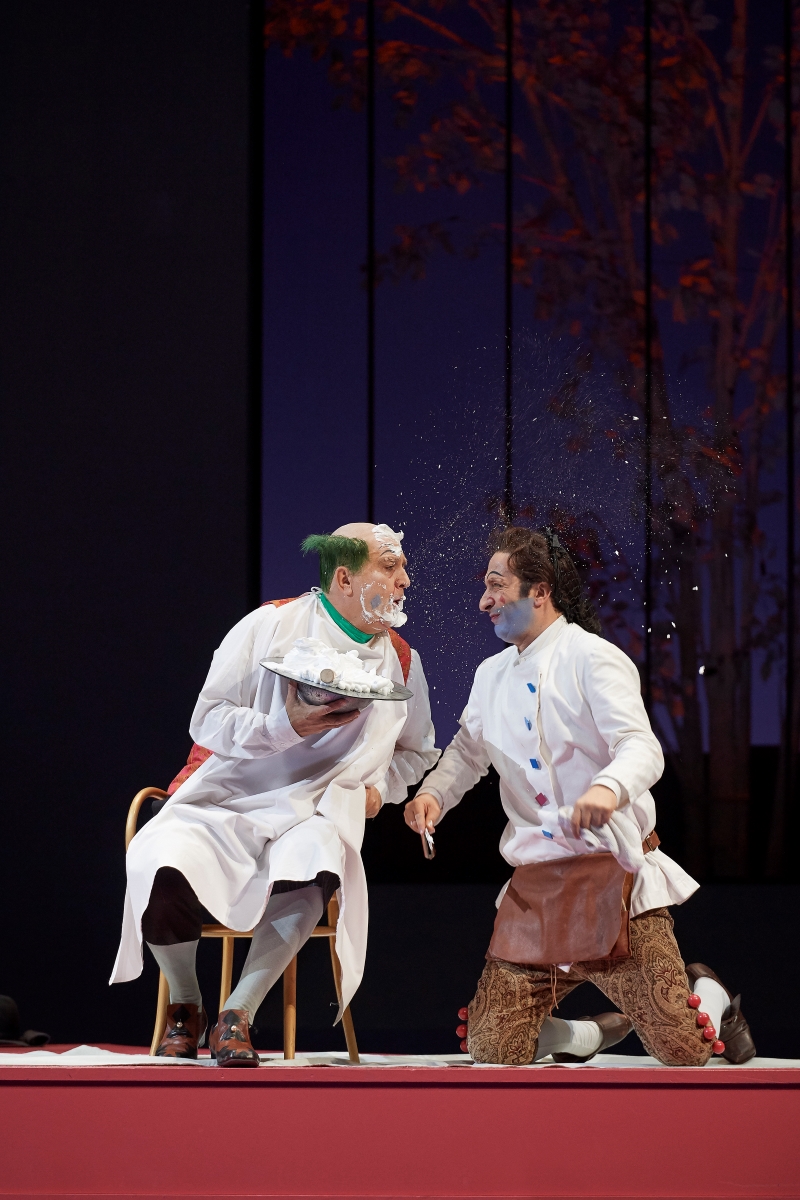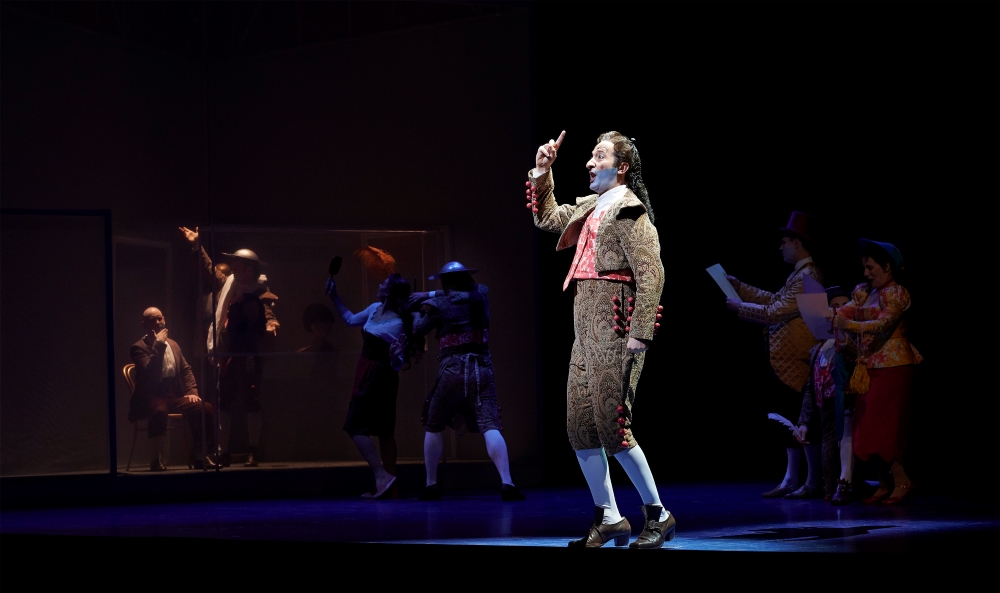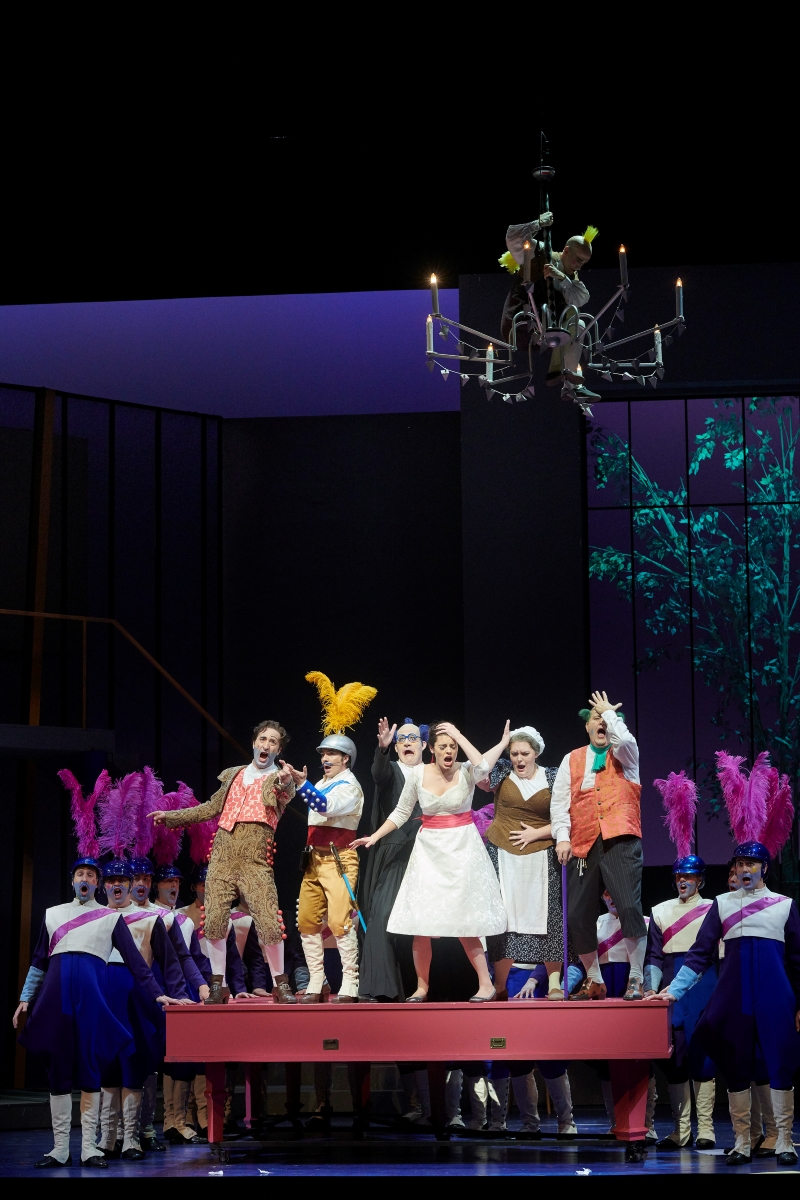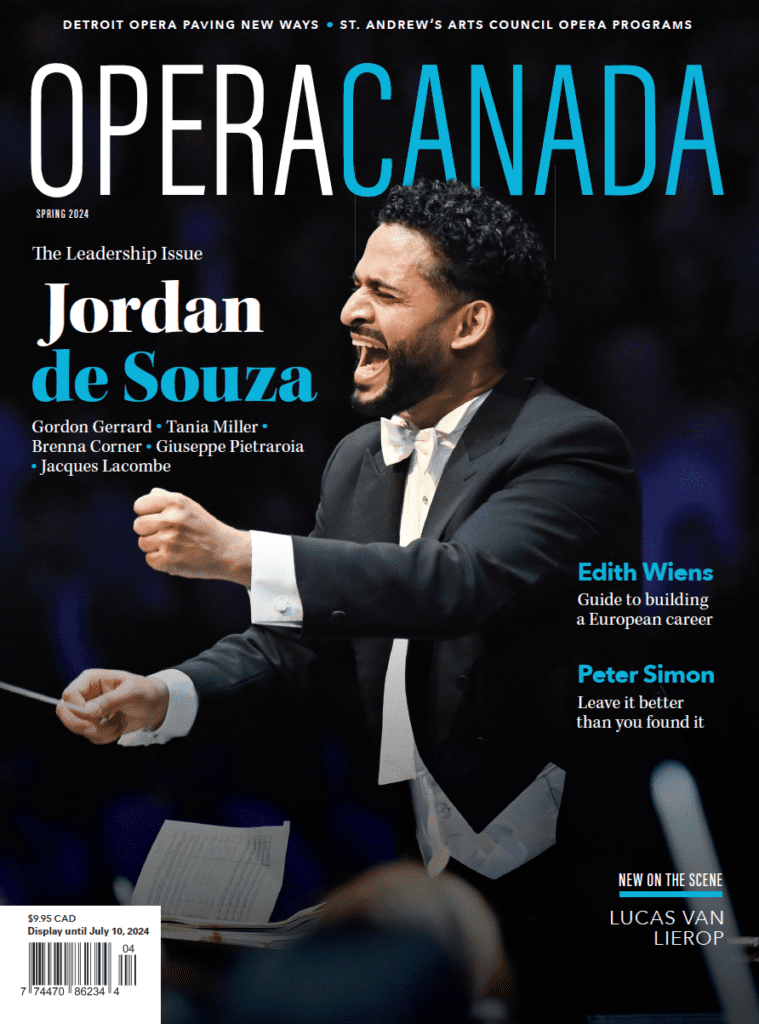Romeo and Juliet should have had Figaro the Barber helping them to escape and run away together just as Rosina and Count Almaviva do in The Barber of Seville.
Clever and funny, Canadian Opera Company’s The Barber of Seville (seen Jan. 19th) is a comedy portraying two star-crossed lovers who overcome the obstacles that stand between their union with the help of the charismatic titular barber. It is chalk full of deception, disguises, secret letters and hilarious characters straight out of the Italian commedia dell’arte tradition.
Before the curtain opens on this vibrant production, conductor Speranza Scappucci leads the COC Orchestra through the fluctuating tempi competing for dominance in the seven-minute overture that foreshadows the feuding between the characters and their desire to be heard over and above the rest. She expertly guides the musicians through the famous piece, her infectious movements carrying the audience through the overture with ease and a certain measure of excitement, which she expands on throughout the opera, building a seamless collaboration between orchestra pit and on-stage action. The Italian-born conductor, who is Principal Guest Conductor of Opéra Royal de Wallonie in Belgium, makes her COC debut embodying the music she directs, with large flourishes and jumping intensity.
The story, based on Pierre Beaumarchais’s French comedy Le Barbier de Séville, unfolds in front of a simple set (by Joan Guillén) that serves as a mechanism to emphasize brightly costumed characters and exaggerated props, such as the larger-than-life guitar brought in for Count Almaviva (tenor Santiago Ballerini) to serenade Rosina (mezzo-soprano Emily D’Angelo). The simple background becomes more impressive as its multifaceted uses become clear. The thin materials that make up Figaro’s (baritone Vito Priante) workshop and Rosina’s house is almost completely transparent. When the lighting (by Albert Faura) is just right, silhouettes can be seen through these gauzy scrims to reveal what is going on behind closed doors, giving the audience a glimpse of what the characters on the stage do not see.
One of the set’s features, a white tree caged in a garden setting, is the perfect metaphor for Rosina’s predicament, further punctuated by dressing her in white to match the tree. She is locked away from the world by her old guardian Bartolo (baritone Renato Girolami) who schemes to marry her for money. In her first Rosina for the COC, D’Angelo’s captivating voice pierces the air like a knife. Throughout the production, D’Angelo’s embodiment of the character effortlessly tells her story. Her movement quality switches from excited and fidgety, to confident and tall, to uncomfortable and rigid. She creates a captivating character with a voice that resonates throughout the theatre.
Joan Font, artistic director of Els Comediants, a Spanish theatre collective who have been making theatre for over forty years, directs this remount of his 2015 COC production. The collective, known for combining dance, puppetry, carnival traditions and commedia dell’arte does all of that here, also adding elements from Italian street theatre, such as the young lovers and the scheming old man, to make an arresting visual landscape.

Renato Girolami (Bartolo) and Vito Priante (Figaro) in Canadian Opera Company’s The Barber of Seville. Photo: Michael Cooper
Throughout his staging, it is clear that Font pays critical attention to detail. As the main action develops on stage, there is consistent secondary action taking place throughout the performance space. Whether it is citizens walking down the street or servants cleaning the piano in Rosina’s house, there is always something happening to create the illusion that life is still going on outside of the comedic love triangle. Font uses characters in the city streets and in Rosina’s home to create empathy within certain parts of the plot. On the streets, the role of the boisterous drunk fits in as the plucky comic relief to an already funny story, but more importantly, the character is a precursor to Count Almaviva’s first disguise. The servants in the house also have their own comedic side stories, the most significant being the foolish servant who gets stuck on the top of a chandelier and is ignored until he falls off during the climax of Act I. Every detail in this production is important and is significant to the overall plot.
The Barber of Seville is a fun, light-hearted comedy that never stops moving. The exaggerated costumes and props, along with the over-animated character traits, create a cartoonish atmosphere. Thanks to Figaro this Romeo and Juliet story ends happily with the lovers signing a marriage contract. Unlike the opera’s disastrous opening night for its world premiere in 1816, the curtain comes down on this production without a hitch.







